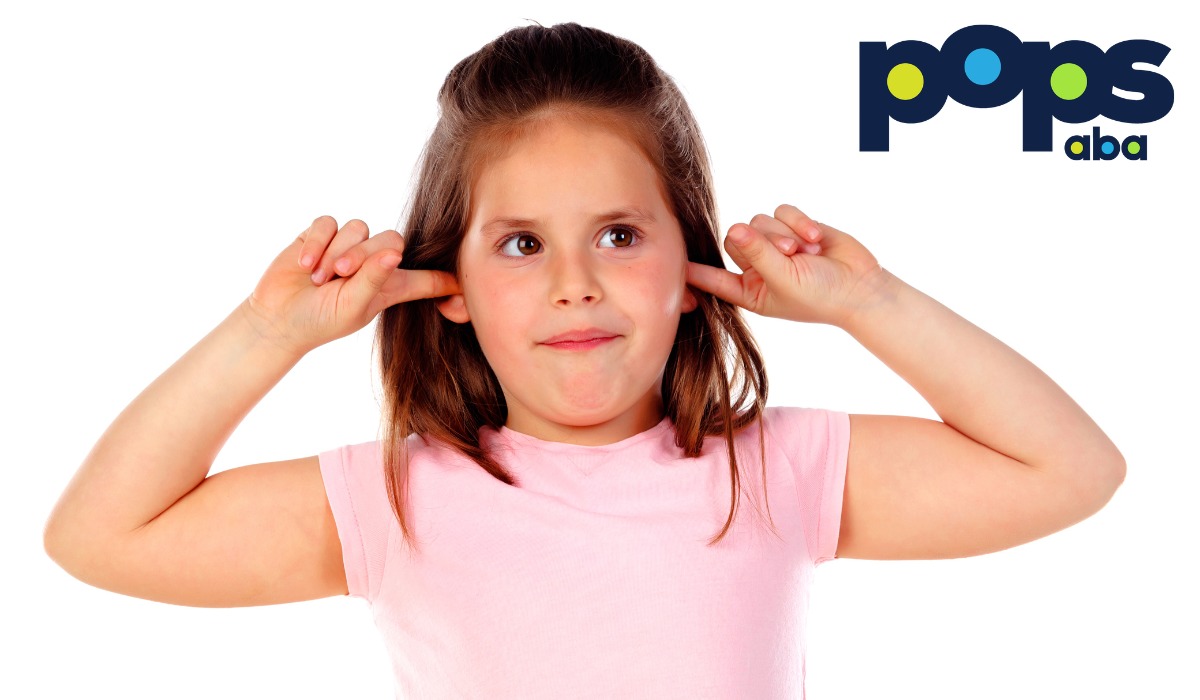Key Points:
- Hypersensitivity in autism refers to extreme responses to sensory input such as sound, touch, light, or smell.
- Children may react strongly to ordinary stimuli, which can lead to discomfort, anxiety, or meltdowns.
- Understanding specific types of sensory sensitivity can help parents and educators create safer, calmer environments for autistic children.
Parents of autistic children often notice their child reacting strongly—sometimes even painfully—to things that seem ordinary to others. Loud noises, bright lights, scratchy clothes, or even the smell of certain foods can trigger intense reactions.
These experiences are tied to hypersensitivity in autism, which affects how sensory input is processed. Unlike typical sensory responses, hypersensitivity can cause overwhelming discomfort or stress from seemingly harmless sources.
Understanding hypersensitivity in autism examples is crucial for creating supportive environments and knowing what might trigger meltdowns or avoidance behaviors. In this article, we’ll break down the common types of hypersensitivity in autistic individuals, offer real-world examples, and provide guidance on how to respond effectively as a parent or caregiver.
What is Hypersensitivity in Autism?
Hypersensitivity in autism refers to an exaggerated response to sensory input, where stimuli like sound, light, textures, or smells feel overwhelming or even painful. These heightened reactions occur because the brain processes sensory information differently, often leading to avoidance, anxiety, or emotional outbursts in response to everyday experiences.
Children with autism may react to tags in clothing, avoid crowded spaces due to noise, or refuse certain foods because of texture. These responses are not behavioral choices—they’re rooted in the child’s neurological wiring and should be approached with empathy and strategies for support.
What Causes Hypersensitivity in Autism?
While no single cause explains all cases, hypersensitivity is often linked to differences in sensory processing in the autistic brain. This can lead to both hyperreactivity (too much response) and hypo-reactivity (too little response).
In hypersensitivity, the nervous system may go into a kind of overdrive. A common example is when a child covers their ears or cries when a fire alarm rings—or even when a vacuum turns on. While the noise is manageable to most, for some autistic individuals, it’s perceived as painful or threatening.
Genetics, neurological differences, and environmental factors likely all contribute. It’s important to recognize that each child’s sensory profile is unique, and hypersensitivity may vary widely in type and intensity. Since these sensory experiences can deeply affect how children engage and express themselves, you may also find our article How to Improve Communication in Kids with Autism especially helpful.
What are the Common Types of Sensory Hypersensitivity?
Hypersensitivity in autism isn’t one-size-fits-all. It can affect any of the senses—and often more than one at a time. Some children are only sensitive to sound, while others may struggle with multiple types of input, like textures, movement, or even internal sensations.
Here’s a deeper look at the primary types:
1. Auditory Hypersensitivity (Sound Sensitivity)
Many autistic children are highly sensitive to sound. Loud noises or even certain frequencies can feel unbearable.
Common reactions include:
- Covering ears during assemblies, alarms, or applause
- Avoiding public restrooms due to hand dryers
- Crying or panicking when someone speaks loudly or shouts
- Distress from background noises others ignore (buzzing lights, refrigerator hum)
These experiences can lead to social withdrawal, school avoidance, or difficulty participating in group activities.
2. Tactile Hypersensitivity (Touch Sensitivity)
Touch can be overwhelming for children with tactile sensitivity. Even light touches might feel scratchy or painful.
Examples include:
- Refusing to wear certain fabrics (e.g., wool, tags, seams)
- Strong aversion to hair brushing, nail trimming, or bathing
- Pulling away from hugs or physical affection
- Discomfort with messy play (sand, paint, glue)
Children with tactile hypersensitivity may avoid activities that involve close contact or physical interaction, which can affect social development.

3. Visual Hypersensitivity (Light Sensitivity)
Bright or flickering lights can overstimulate a child with visual hypersensitivity, making it hard to focus or feel at ease.
Look for:
- Squinting or covering eyes in brightly lit rooms
- Avoidance of sunlight or flashing screens
- Irritability in environments with fluorescent lighting
- Disorientation in busy visual settings (e.g., malls, classrooms)
These reactions can make learning environments especially challenging without accommodations like sunglasses or dim lighting.
4. Olfactory Hypersensitivity (Smell Sensitivity)
Some autistic individuals are extremely sensitive to smells, pleasant or unpleasant. Even faint odors can cause nausea or distress.
Examples:
- Gagging or refusing to eat because of food smells
- Avoiding certain people due to perfume or scented lotions
- Complaining of smells others can’t detect
- Covering the nose or fleeing from environments with strong odors
This sensitivity can impact daily routines like meals, hygiene, and social participation.
5. Gustatory Hypersensitivity (Taste Sensitivity)
Taste hypersensitivity often results in food selectivity or refusal. Children may find certain flavors too intense, spicy, bitter, or sweet.
Signs include:
- Gagging or spitting out foods with strong seasoning
- Preferring bland or specific-textured foods only
- Refusing entire food groups
- Insisting on sameness in meals (same brand, temperature, presentation)
This can lead to nutritional challenges or stress during meals unless carefully managed.
6. Vestibular Hypersensitivity (Balance & Movement)
This type involves sensitivity to movement or changes in position. Children may avoid swings, escalators, or stairs.
Common behaviors:
- Fear of climbing or balancing
- Refusing to ride in cars or elevators
- Motion sickness with mild movement
- Discomfort during activities that involve spinning or jumping
Vestibular hypersensitivity can impact gross motor skill development and play participation.
7. Proprioceptive Hypersensitivity (Body Awareness)
Children with this sensitivity may feel physical contact too intensely or struggle with body coordination.
Notable signs:
- Clumsiness or fear of bumping into objects
- Avoiding physical games or sports
- Overreacting to accidental bumps or brushes
- Preferring to sit still to avoid unexpected movement
This can influence a child’s confidence in physical spaces and willingness to try new activities.
How Does Hypersensitivity Impact Daily Life?
Hypersensitivity in autism affects far more than comfort—it can disrupt routines, interfere with learning, and cause emotional distress. For many children, unmanaged sensory overload can lead to shutdowns or meltdowns, especially in environments that don’t accommodate their needs.
Everyday settings like classrooms, grocery stores, and social events can feel chaotic and threatening. Parents often find themselves avoiding outings, struggling to get through mealtime, or feeling unsure about how to soothe their child.
Support begins with awareness and validation. Knowing that your child’s reactions stem from real, neurological responses—not misbehavior—empowers you to plan and advocate more effectively.
How Can Parents Help Their Child Cope with Sensory Sensitivities?
Managing sensory hypersensitivity involves a combination of prevention, accommodation, and teaching self-regulation. Each child’s sensory needs should be assessed individually to determine the best interventions.
Here are key strategies that may help:
Create Predictable Environments
Consistent routines and familiar settings help reduce anxiety caused by unexpected sensory input or changes.
Offer Sensory Tools and Supports
Use items like headphones, chewables, or weighted vests to help manage overwhelming sensory experiences.
Designate Sensory-Friendly Zones
Provide quiet, low-stimulation areas where your child can retreat and self-regulate when needed.
Practice Gradual Exposure (When Appropriate)
Gently introduce triggering stimuli over time to help build tolerance without overwhelming your child.
These strategies can dramatically reduce the frequency and intensity of distressing reactions, while also improving daily functioning and emotional regulation.
ABA Therapy for Sensory Sensitivities
Applied Behavior Analysis (ABA) is one of the most evidence-based therapies for addressing behavioral challenges in autism—including those triggered by sensory sensitivities. ABA therapists use data-driven interventions to help children tolerate sensory input more comfortably, reduce avoidance behaviors, and develop positive coping mechanisms.
For example, if a child reacts strongly to the sound of hand dryers in a public bathroom, ABA can introduce a desensitization plan. This might involve pairing recorded dryer sounds with a preferred activity at a low volume, then gradually increasing exposure while offering positive reinforcement.
ABA therapy is highly individualized, allowing the therapist to target specific sensitivities—whether it’s tactile defensiveness, taste aversion, or light intolerance. Over time, children can learn how to communicate their needs more effectively and respond with less distress to overwhelming input. Since many children on the spectrum also rely heavily on memorized routines or phrases, understanding how rote memory functions can provide deeper insight into their learning styles—explored further in our article Rote Memory in Autism: What It Is and How to Support It.
Build Strong Foundations With ABA Therapy
If your child is struggling with hypersensitivity and sensory overload, professional support can make a lasting difference. At Pops ABA, we provide compassionate, individualized ABA therapy in North Carolina and New Jersey to help children with autism build resilience and navigate sensory challenges with confidence.
Our team works closely with families to create customized behavior plans that support your child’s comfort, independence, and overall well-being. Whether it’s managing noise aversion, food sensitivities, or other forms of hypersensitivity, our therapists use evidence-based strategies to help your child thrive.
Get in touch with us today to learn how ABA therapy can help your child gain the skills and support they need to succeed—at home, in school, and in life.



